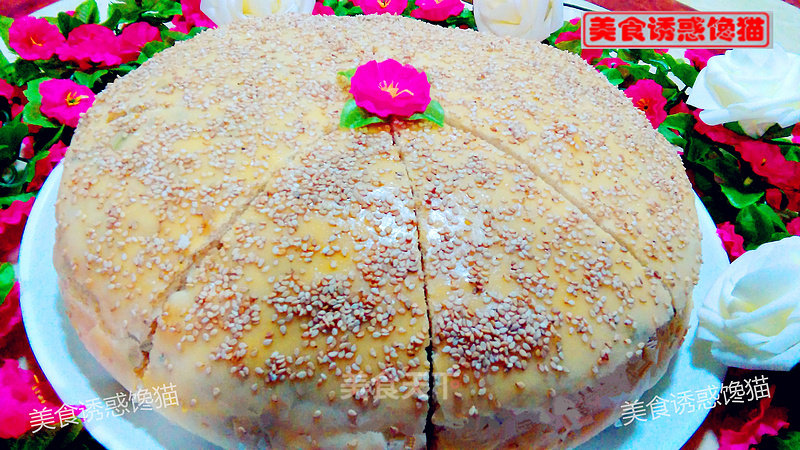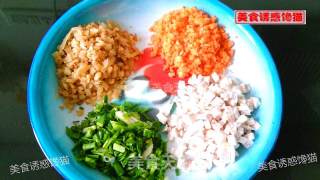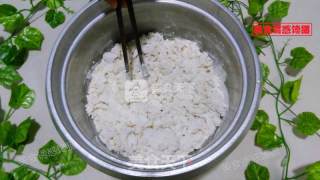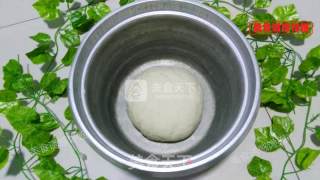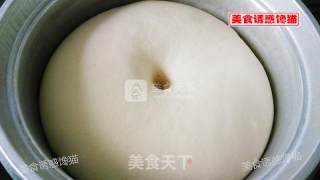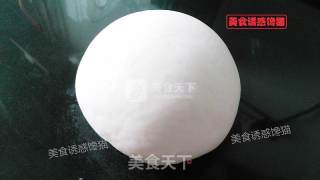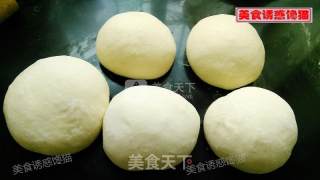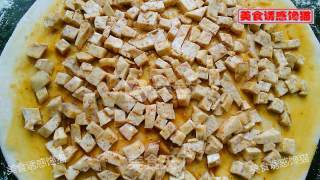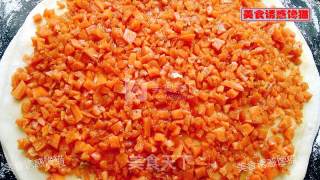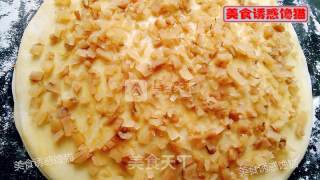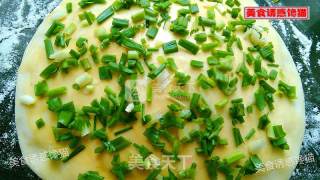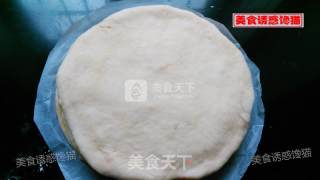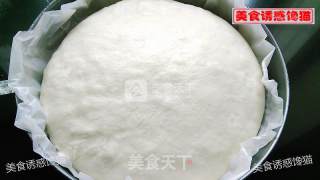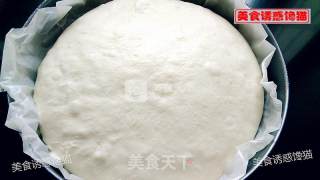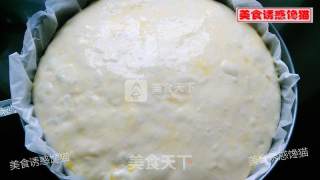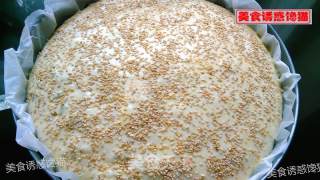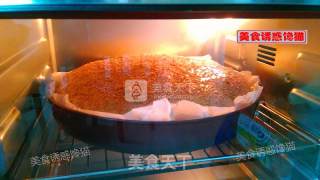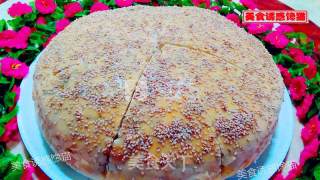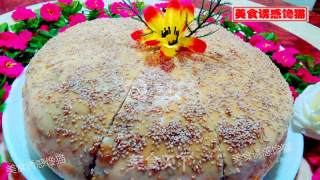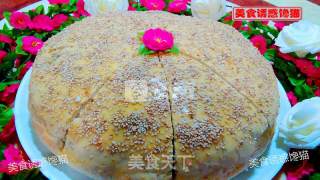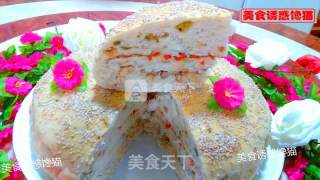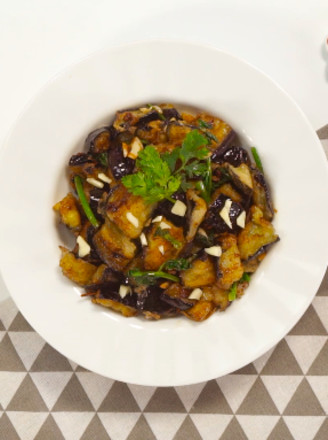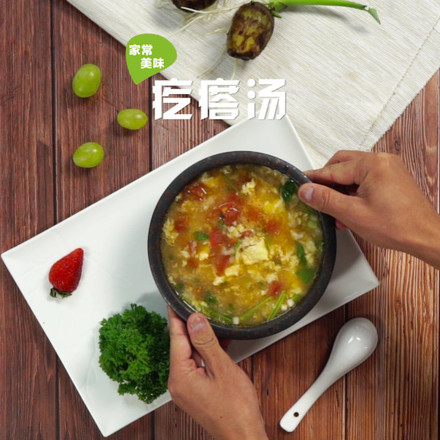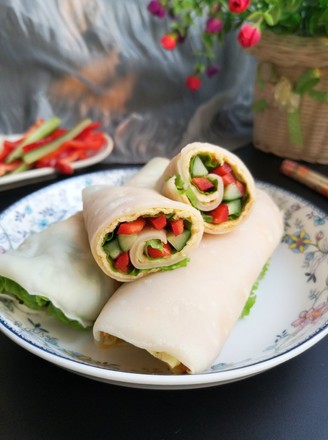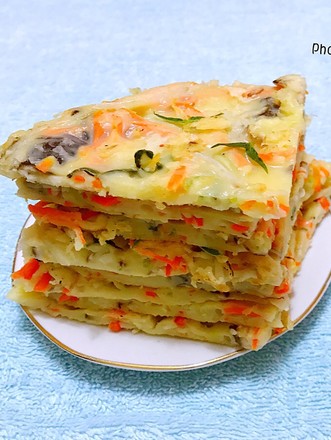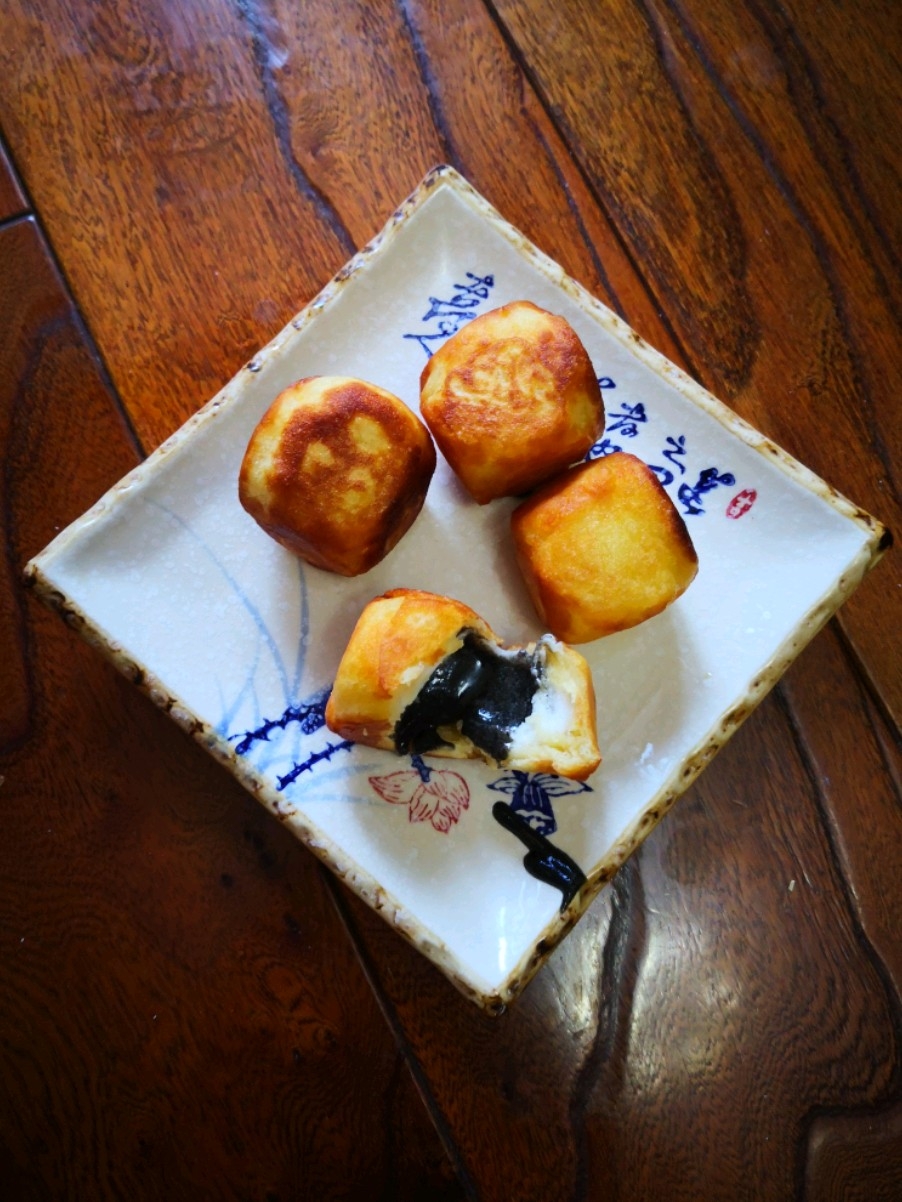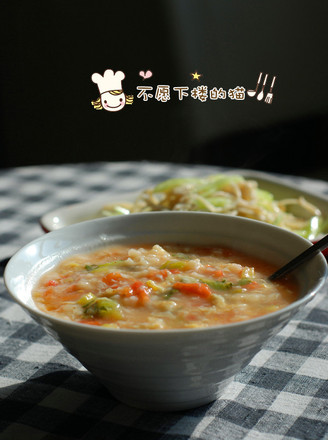Golden Melaleuca
1.
Wash the carrots, taro, first vegetables, and chives, and chop into fine pieces. Marinate the fragrant taro and carrots with oyster sauce, salt, thirteen incense and chicken essence.
2.
Mix flour, yeast, and sugar, slowly pour in warm water, while pouring, stir with chopsticks to form a flocculent shape.
3.
Knead the dough until the surface is smooth. Cover with a lid or plastic wrap, and leave in a warm place to ferment to double its size.
4.
Dip your index finger with flour, poke a hole in the middle, the hole does not collapse or shrink, and you can see that the inside of the dough has become a honeycomb shape in the middle of the dough, and it is fermented.
5.
Knead the fermented dough until the surface is smooth.
6.
Exhaust, divide into 5 equal parts, round, cover with plastic wrap and relax for 15 minutes.
7.
Roll all 5 pieces of dough into dough pieces with a diameter of about 25 cm.
8.
Spread a layer of oyster sauce on the first piece of dough and spread a layer of taro.
9.
Spread a layer of oyster sauce on the second piece of dough and spread a layer of carrots.
10.
Spread a layer of nougat on the third piece of noodles (the nougat itself has a salty taste, so you don’t need to put oyster sauce on it).
11.
Spread a layer of oyster sauce on the 4th piece of dough and spread a layer of chives.
12.
Do not put fillings on the 5th dough.
13.
Place in a 9-inch round mold lined with baking grease paper or tarp.
14.
Proof twice to double the size.
15.
Brush a layer of egg wash on the surface of the dough.
16.
Sprinkle some white sesame seeds.
17.
Put the noodles in the preheated oven, middle level, upper and lower heat, and bake at 130 degrees for 40 minutes (depending on the temperature of your own oven).
18.
Once out of the oven, it will be demoulded and let cool.
19.
Cut into pieces and serve on a plate.
20.
Appreciation of the finished picture.
21.
Appreciation of the finished picture.
22.
Appreciation of the finished picture.
Tips:
1. Adjust the baking time and temperature appropriately according to your own oven.
2. During the baking process, it is found that the surface of the bread can be covered with a layer of tin foil after being colored.

